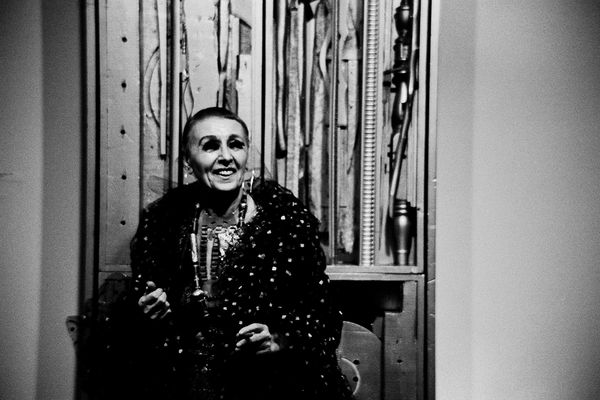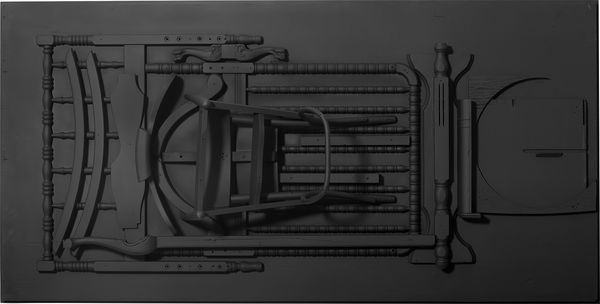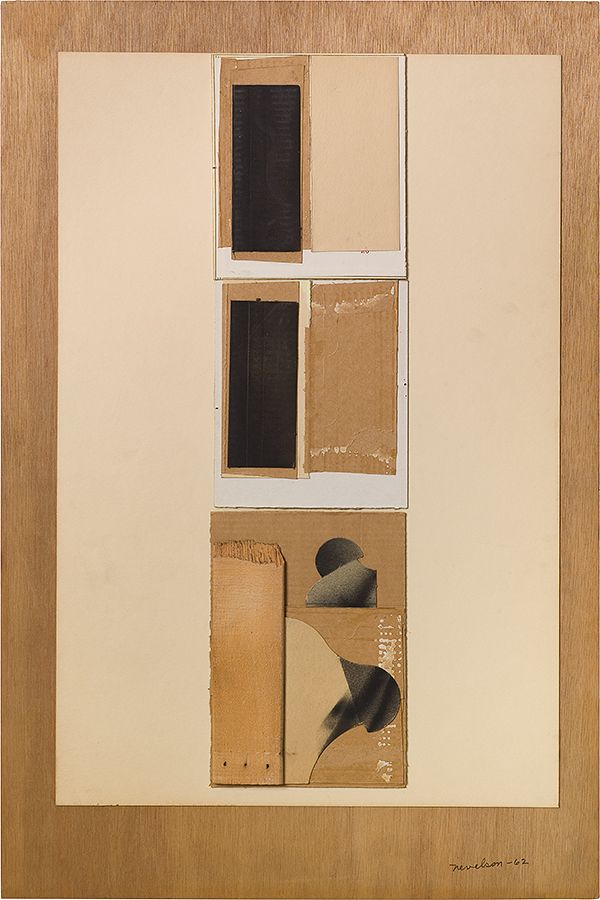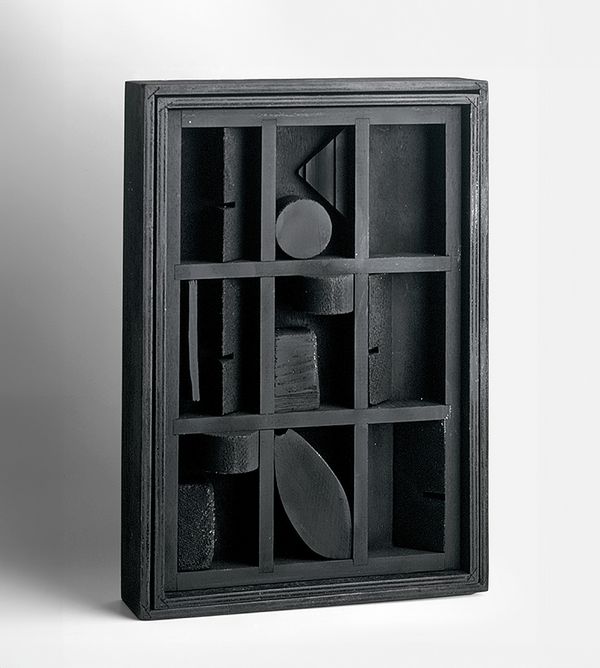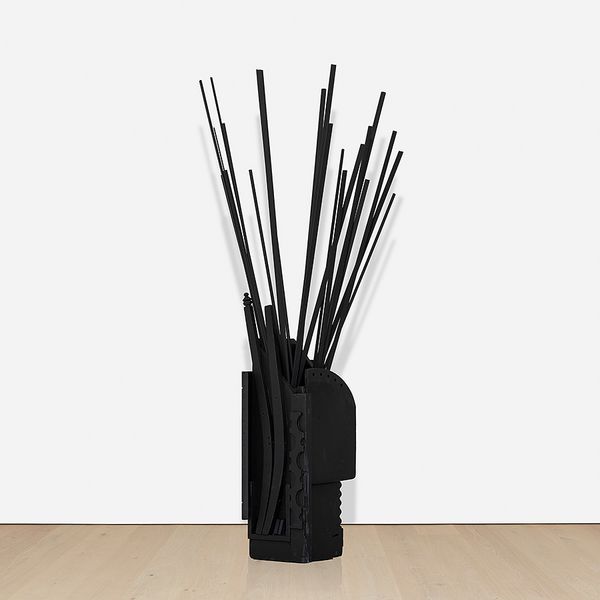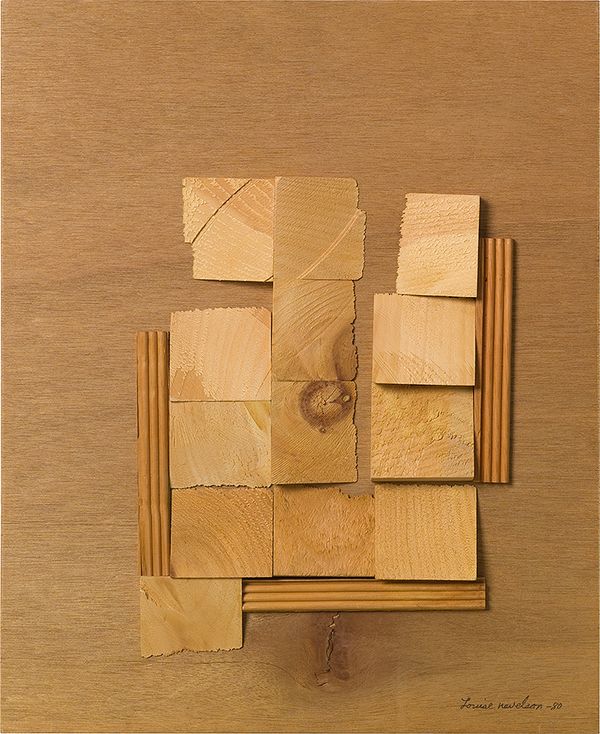Louise Nevelson, Studio Marconi, Milan, 1973. © Enrico Cattaneo.
—Written by Margherita Solaini, Specialist, Associate Director, 20th Century & Contemporary Art
Presented at Phillips Milan from 11 April to 30 June 2024, Louise Nevelson - Beyond the Surface explores the artist’s revolutionary life and career and details her journey as a woman who defied boundaries. Nevelson was born into a Jewish family as Leah Berliawsky in 1899 near Kyev in Ukraine. In 1905 her family immigrated to the United States, eventually settling in Rockland, Maine. In the 1920s she married the shipping broker Charles Nevelson and relocated with him to New York City, where they had a son. She pursued studies in drama and enrolled at the Art Students League and, in the early 1930s, left her husband to travel across Europe and attend Hans Hofmann’s school in Munich.
Back in New York, she continued her art research and took part in numerous group exhibitions from the 1930s to the early 1950s. Her fascination with shadow and space translated into all-black wood sculptures, establishing a visual vocabulary that would become characteristic of her work from the mid-1950s until her passing in 1988.
Louise Nevelson, Untitled, 1976–1978. Louise Nevelson. Beyond the Surface.
The exhibition presents significant pieces executed from the 1960s to the 1980s, including her iconic, monumental black assemblages, collages, and multiples. Nevelson's monochromatic works — mainly crafted from wooden discards such as dismantled chairs and table legs found in the streets of New York City — explore how feminine creative power can imbue old objects with new life. Seen together in the exhibition, they stand as a testament to her singular artistic vision.
Wood, Reclaimed
Louise Nevelson, Untitled, 1962. Louise Nevelson. Beyond the Surface.
Embracing unconventional paths for much of her long life, Louise Nevelson embodied multiple identities as a daughter, wife, mother, and, above all, artist — one whose ever-changing context was made solid by her principal medium of expression: wood.
Nevelson’s father was a lumberjack whose own father had also been in the timber business in Ukraine. Upon relocating to Maine, he soon became a prosperous real estate entrepreneur and lumber merchant. When she arrived there, Louise, who was very shy as a child, felt a strong sense of isolation in the small and austere Rockland. Her family spoke Yiddish at home, had distinct habits, and dressed differently from others. She soon found comfort in wood, entertaining herself by carving the leftovers of her father’s work, and her interest in sculpture was sparked.
Louise Nevelson, Winter Chord, 1974. Louise Nevelson. Beyond the Surface.
As an adult in the 1950s, the idea to use wood for her assemblages came to the artist when she was walking in the streets of New York City and a piece of wood covered in mud caught her attention, perhaps awakening the memories of the forests once owned by her grandfather in Ukraine. From that moment on, she filled her studio with materials salvaged from the surrounding neighborhood, favoring wood as it was cheap and warm, later remarking that it “always pulsated with life.” Nevelson wanted to give a new identity to objects that had been discarded, evoking her childhood feelings as an outsider.
The monumental sculptures she went on to execute are assemblages of pieces that retain traces of their previous existence — the leg of a table, a headboard, a picture frame, the back of a chair, a toy shaped as the head of a duck — which she unified and brought together with a single color.
Wood is always a former tree.
—Louise Nevelson
Studio Marconi, Milan, 1973. © Enrico Cattaneo.
Ultimate Black
When she was very young, Louise Nevelson did not enjoy school apart from her art classes. At the time, she declared that she wanted to be a sculptor, not a painter, as she did not want color to help her.
In the 1930s she became the assistant of Mexican painter Diego Rivera, and she was influenced by the dimensionality of his murals as her artistic style evolved. She fused this influence with the geometry of Cubism, the ready-mades of Dadaism, the force of Abstract Expressionism and the Surrealists’ logic of dreams. In the 1940s and 1950s — very difficult years on a personal level — she traveled to Guatemala and Mexico to view Pre-Colombian art and began to produce a series of wood landscape sculptures.
Louise Nevelson, Untitled, 1985. Louise Nevelson. Beyond the Surface.
In the early 1950s, her work turned to monochrome black compositions, underscoring the initiatory death of the elements that comprised them and transforming them with paint. Black, the color of darkness and shadow, was always her favorite — the most noble and forgiving, containing all colors. In 1959 she also started using white and in the early 1960s, she included gold, too.
When I fell in love with black, it contained all color. It was not a negation of color. It was an acceptance. Black encompasses all color. Black is the most aristocratic color of all […] For me this is the ultimate.
—Louise Nevelson
A Wholly Feminine Ambiguity
Louise Nevelson, Untitled, 1980. Louise Nevelson. Beyond the Surface.
At nine years old, when asked by a librarian about her dreams for the future, Nevelson said she wanted to be an artist — a very unusual choice, especially for a woman. Indeed, achieving her aspirations required unparalleled determination and resilience, and she displayed enduring strength in overcoming obstacles such as the unexpected birth of a baby, a failed marriage, numerous bouts of depression, persistent financial struggles, and the biases inherent in a predominantly male-dominated art world. Success arrived late for Nevelson, whose breakthrough occurred in 1959 at the age of 60 at the seminal Sixteen Americans show curated by Dorothy Miller at the Museum of Modern Art, New York (MoMA). The exhibition also launched Jasper Johns, Ellsworth Kelly, Robert Rauschenberg, and Frank Stella — all men and all younger than Nevelson’s son.
Today, she is regarded as a pioneering sculptor who elevated assemblage and environmental art, breaking free from many stereotypes and empowering women to brandish a hammer and nails in their own creative endeavors. She never gave up because she “simply happened to be a woman” and never claimed a feminist redemption. Embracing what Carla Lonzi defined as “a wholly feminine ambiguity,” Nevelson detached her creative genius and personal fulfillment from the concept of gender. Perhaps as an additional manifesto of her intellectual emancipation, she expressed herself by dressing in a highly eccentric manner, wearing thick false eyelashes, vibrant silk or velvet gowns, headscarves, and golden slippers.
Louise Nevelson, Studio Marconi, Milan, 1973. © Enrico Cattaneo.
In a 1972 interview, Nevelson recounted her observations of gender in detail, remarking that “in birth a male has what constitutes a male. A female has what constitutes a female […] But that does not reduce the preconceived idea that we are in a society and have been for thousands of years where there is male dominance, and consequently, that is just a cliché that the world has superimposed that a female cannot produce or have visions of grandeur and greatness, that nature never meant that anyone who has a brain in their head that they should be reduced because of the sex.”
A New Yorker in Milan
Louise Nevelson, Studio Marconi, Milan, 1973. © Enrico Cattaneo.
Louise Nevelson loved New York for its roughness, contradictions, and freedom, describing the city as “my mirror.” When she moved there in 1920, she instantly knew she would never leave it for anywhere else. The other place where she felt understood, perhaps because of her affinity with Arte Povera, was Italy, where she traveled for the first time in the 1930s. She later developed a special, long-lasting connection with Milan, where she held her first show in 1973 at Studio Marconi. She also represented the United States at the 1962 Venice Biennale and Germano Celant included her in his own Biennale in 1976.
When I look at the city from my point of view, I see New York as a great big sculpture.
—Louise Nevelson
Louise Nevelson, Untitled, 1976. Louise Nevelson. Beyond the Surface.
Cecilia Alemani celebrated Nevelson in the 2022 Venice Biennale The Milk of Dreams, where she exhibited the monumental sculpture Homage to the Universe in the Arsenale, and Julia Bryan-Wilson curated the collateral solo show Louise Nevelson – Persistence at the Procuratie Vecchie. The current exhibition at Phillips brings Nevelson back to Milan, inviting all to take the next journey through her works.
“I have made my world and it is a much better world than I ever saw outside.”
—Louise Nevelson
Discover More from Modern & Contemporary Art >
